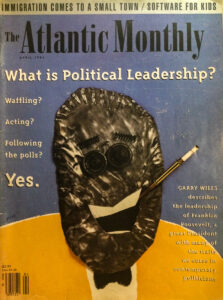 In 1994, I bought the April edition of the Atlantic Monthly because it had an article entitled “What is Political Leadership?” The author was Garry Wills, a conservative Catholic historian, with whom I had become acquainted through reading his book reviews in the New York Review of Books. Increasingly he has taken positions in relation to civil rights and then Vietnam which, in conventional terms, would seem to belie his conservative Catholic stance, especially given William Buckley was an early mentor. However, to be socially progressive is not incompatible with conservatism.
In 1994, I bought the April edition of the Atlantic Monthly because it had an article entitled “What is Political Leadership?” The author was Garry Wills, a conservative Catholic historian, with whom I had become acquainted through reading his book reviews in the New York Review of Books. Increasingly he has taken positions in relation to civil rights and then Vietnam which, in conventional terms, would seem to belie his conservative Catholic stance, especially given William Buckley was an early mentor. However, to be socially progressive is not incompatible with conservatism.
When this article was published he was 60 years old and had been in the History Department at North Western University since 1980.
Eventually, now that I have read the piece, I believe he was probably recycling long held views given his concentration on Lincoln, Roosevelt and to a lesser degree Washington. Interspersed are anecdotes about his relationship with his father, whom he resented when he left his mother to marry a much younger Hollywood model. The disdain drips, but nevertheless he worked for his father. As he says: “That is the way leadership works – reciprocally engaging two wills…”
He makes the obvious comment. A leader must have followers, but he describes the patriarchal society concept personified by Pericles in Athens as described by Thucydides, “enabled by the respect others had for him and his own wise policy, to hold the multitude in a voluntary restraint”.
There is no doubt that Pericles was a great orator and a competent general, initially prevailing over the Spartans. Yet Wills tends to dismiss Pericles as an applicable role model. As he does also with Dale Carnegie – with his “win friends and influence people” dicta as though the leadership is customer dependent.
Wills makes the simple fact that to be a leader, one must have followers. As such, it is not a quality that is proportional to the cleverness of any advertising campaign.
I have always wondered what constitutes leadership, as though there are rules. My own observations about leadership have relied on the tripartite Weberian definition, where there are “traditional leaders” who have been afforded this role by their inherited position. Many of this class have followers only as long as the dynasty survives, because of the many “grace and favour” positions which accompany such leadership. The various Arab desert States epitomise such leadership in the modern world where once it was European royalty or Asian emperors. Often there were religious tags built into such leadership.
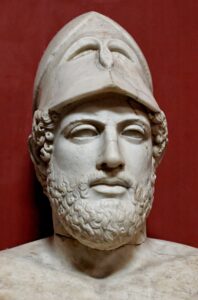
I have witnessed the second type, charismatic leadership as epitomised by Pericles. In my life I have followed one charismatic leader – someone whom I never met and who, since his death, has been revealed as a very flawed character. However, a leader elicits an emotional response from the followers wanting to aspire to a goal (or goals), irrespective of the actual nature of the man (or woman).
Wills makes a very insightful observation when he said that a leader needs to understand his followers more than they need to understand him. John F. Kennedy used rhetoric in a way that drew people like myself to ideals of service – to a better world. The idea of a Peace Corps appealed because it provided evidence of a shared goal, irrespective of whether or how obtainable it actually was. The concept implied concern and actual commitment to both communities or individuals in need.
Wills makes the point that Lincoln based his belief around the Declaration of Independence as a vital aspect of his leadership. Yet he fails to acknowledge that assorted charlatans, who have not only used the Declaration of Independence but also the Bible, to further their image. To my mind, invoking such texts provides no indication of the quality of leadership; it just suggests that the person has read a desk calendar or some such.
Lincoln was assassinated, as was Kennedy. Therefore, there will also be an expectancy in leadership unfulfilled. Roosevelt was a different person, a model of leadership that Wills attempts to define. Roosevelt went from a comparatively young man of privilege to the older man who faced and battled the legacy of poliomyelitis for the rest of his life.
Battling personal infirmity and that of the country (and the World for that matter) merged. He would not give up, and that resilience was translated into his leadership style. He was able to disguise his paralysis and yet develop an intimacy with his followers with his regular “Fireside Chats”; he gave hope to his followers with the provision of civic works such as the Tennessee Valley Authority. Yet he did nothing about civil rights: the lynching of Southern blacks; the Ku Klux Klan, the Tuskegee experiments; as well as the isolationist foreign policy and early support for the anti-Semitic, pro-fascist Father Coughlin.
Roosevelt, who is so often used as a model of successful leadership, was flawed, got things wrong and eventually stayed too long, succumbing to a mixture of diseases associated with his long term disability. The whole product made him very vulnerable to the machinations of Stalin, whose home ground advantage at Yalta was never so evident as in the 1945 determination of spheres of influence.
In the end, Wills extensively explores these charismatic leaders yet has no more solution to the nature of ideal leadership beyond reference back to Pericles. It is as though he searched and found no better model. Wills classified Roosevelt as Periclean, (and incidentally to reinforce the point Wills compared Roosevelt’s leadership with that of the fluffy failed Adlai Stevenson).
There is no exploration of where charismatic leadership continues through the third model, an incorruptible bureaucratic leadership even after the charismatic leader has moved on. Democracy depends on bureaucrats who have to be incorruptible; thus, if you outsource the work of bureaucracy without any apparent goal other than feathering the nest of the private consulting companies, then the leadership which competent bureaucrats could provide is compromised. I remember when bureaucratic leadership was very important, as when Sabine vaccine for polio was introduced and the country had to be transferred from believing that the initial spruiked Salk vaccine was not as good.
Wills did not analyse the qualities of bureaucratic leadership in effectively carrying out the government policy. Maybe series such as “Yes Minister”, caricaturing bureaucracy leadership, while immediately very funny, nevertheless have had an insidious effect on the credibility of bureaucratic leadership. This variability in the effects of bureaucratic leadership has been shown at various stages during the current pandemic.
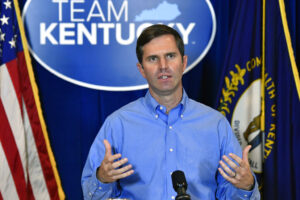
As I was exploring this topic, I tuned into the Kentucky disaster, and noted immediately the decisive compassionate leadership being shown by the Governor, Andy Beshear. He so clearly demonstrates the qualities of the charismatic leader. It is hoped that he has the moral compass to keep going with it. His demonstration of charismatic leadership and his deft and rapid transfer of the reconstruction of his State to his relevant authorities will serve as a model.
My bias is that of a person who lived through the 60s, I believe Beshear will take a national leadership role at some point. He reminds me of Robert Kennedy. I hope his life is not cut short and he does not become a fallen idol, as a number of people of promise who have not been able to define a successful leadership style.
Always Disputin’
Putin often speaks of a “One Russia,” meaning Russia, Ukraine and Belarus — or “Big Russia” and “Little Russia,” Russia being the “big” and Ukraine the “little.” He argued in 2009 that “no one should be allowed to interfere in relations between us. They have always been the business of Russia itself.”
A few years ago, before the pandemic, I took a boat trip down to the mouth of the Danube – the enormous Danube delta, the point where the river enters the Black Sea which, for the sake of completeness, the boat nosed into before retreating back into the Delta.

On the Northern aspect of the delta, Romania, Moldova and the Ukraine villagers live on the sandy sediment which form islands amid the reeds and sedges above the waterline.
We stopped at one of these villages called St George, where port facilities had been constructed. Here the people in this tiny village tucked within the Romanian border are mostly Ukrainian speakers. All very quaint, with all the hallmarks of the community where time has rested, except to make itself accessible to a scant tourist trade but probably more importantly to help the villagers to get supplies from a post-feudal world which has invented vodka in bottles, tinned food and frozen fish fingers.
We pass Tulcea on our way into the Delta. This township serves as the gateway to the Delta, it is firmly in Romania but as the captain said for those who have a nose for countries, we had actually been in Moldova for a brief time – at least the bow of the boat had been.
So here we were at the intersection of three countries, with Russia not that far away looking over the shoulder of Ukraine. Russia has shown no interest in annexing Romania, although one may adduce there has been Russian mischief in the creation of the Romanian-speaking Moldova. The Russians want to keep Moldova apart from the EU, but even with a breakaway province, Transnistria, along its Ukrainian border, and even with its small population, Moldova maintains a separate identity from Romania.
It demonstrates what a jigsaw the whole area is. Both Moldova and Ukraine following the dissolution of the USSR have initially had pro-Russian governments, but that has changed. Both governments now are solidly pro-western.
Putin holds the levers of Soviet power internally through his labyrinthine security services. Having been a middle level operative at the time of the breakup of the Soviet Union, he has shown his genius in assembling it again. The fact that he has done so demonstrates the skill of the person, given that it is essential that he maintain internal discipline over Russia itself. After all, he is intoxicated with the glories of Russia, and therefore the old capital of the Russian diaspora, Kiev, is the capital of the modern Ukraine but to him a crucial part of Russian heritage.
Russia is not the power it once was and the only way to invade Ukraine successfully, in his eyes, would be to ensure that potential adversaries are confused. Therefore, chaos is always his solution and fomenting chaos is one mixture of feinting, lunging, retreating and infiltrating. After all, he has worked out that America is war-wearied, and Biden has said as much. So that leaves the other members of NATO, weakened by the Brexit machinations, to come to the aid of the Ukraine. Their preferred weapon is not military but economic. The Russian economy must stagnate and then contract, which in turn starves the money trail of the Putin kleptocracy, another arm of Putin’s power. That economic rationing is the theory.
Putin relies on State sanctioned mercenaries in companies like Wagner to keep up a diet of chaos by interfering in the politics of smaller counties. At the same time he uses the Orthodox Church to spread the message of Ukrainian oneness with Mother Russia, and it worked while there was a pro-Soviet government there. After all, he repossessed Crimea with pathetic protests emanating from the West, but his incursion into eastern Ukraine seems at least to have accelerated the modernisation of the Ukrainian armed forces.
There may have been excuses for those who knew the history of the Crimean annexation. Those who knew the background of the Ukrainian hold on Crimea would have known it was a move by Khrushchev to obtain the support of the then UkSSR in his battle to oust Malenkov in 1954, even though Crimea was predominantly Russian. Hence it did not evoke the same response from the West.
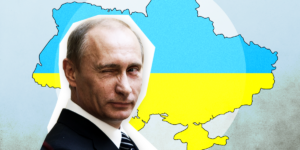 Thus, the assumption is that the Russian-speaking areas of Ukraine would be attracted to Putin. In Ukraine these speakers constitute 30 per cent of the population and, as would be expected, the area where Russian is least spoken lies along the western border area, with its history of Hapsburg rule. Nevertheless, the linguistic division is not sharp, and often Ukrainians use both Russian and Ukrainian in conversation, even within the one sentence. In contrast there has been a marked change in national sentiment with the pro-Soviet President, Viktor Yanukovych and his cronies being ousted in 2014.
Thus, the assumption is that the Russian-speaking areas of Ukraine would be attracted to Putin. In Ukraine these speakers constitute 30 per cent of the population and, as would be expected, the area where Russian is least spoken lies along the western border area, with its history of Hapsburg rule. Nevertheless, the linguistic division is not sharp, and often Ukrainians use both Russian and Ukrainian in conversation, even within the one sentence. In contrast there has been a marked change in national sentiment with the pro-Soviet President, Viktor Yanukovych and his cronies being ousted in 2014.
As one commentary has said: “The prominent role played by Russian-speaking Ukrainians in repelling Putin’s hybrid invasion has done much to alter perceptions of language and identity in today’s Ukraine, leading to the rise of a civic national identity that goes beyond the narrow confines of language and ethnicity. Many saw the election of Jewish Russian-speaker Volodymyr Zelenskyy as Ukraine’s sixth president in 2019 as further confirmation of the country’s evolving linguistic politics.”
The Ukrainians would also be less than impressed by the support of the tyrannical regime of Alyaksandr Lukashenka in Belarus. Belarusian is one of two languages spoken in that country, together with Russian. Since 1917, there has been an attempt by the Russians to smother the Belarusian language and merge the cultural identity. The fact that Lukashenka is totally dependent on Putin is not lost on the Ukrainians, especially his use of Belarus bastardry to create chaos along the Polish border.
Yet Putin will continue to create brinkmanship as his weapon of chaos. If he invades, then as one knows from chess, order prevails, unless the players on the other side do not know who will make the next move. If they hesitate then Putin leans across the board and makes the move himself. More chaos as he has usurped the rules.
Wait a minute, where does Putin stop his incursion? Are the Russian people prepared to pursue the Putinic folly? If he sweeps across the country, then he has to garrison the land conquered.
His adversaries watch as Putin experiments his weaponisation of chaos in Belarus. Those familiar with chess know he will start the game with fewer pieces than his adversaries, and they soon stop him reaching over the Board to manipulate their pieces. Instead, they will line their surplus pieces along the border of his exclave, Kaliningrad, along the Baltic Sea. Perhaps the NATO countries would be tempted to annex it, given that one can hypothesise that many of the weapons of chaos have been hatched there, designed to cause the maximum amount of “cyberpiracy” with the resultant “cyberpain”. I wonder why Kaliningrad has been tolerated for so long, given its strategic vulnerability.
I wonder what I have missed within Putin’s thinking. Conventional risk analysis would say no way, but how disjointed and craven are the members of NATO?
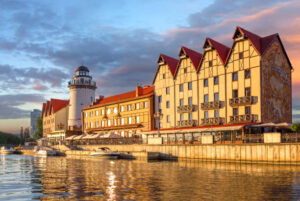
Tread warily
I had negotiated the same set of stairs hundreds of times. I have always made sure that I grabbed the rail when both climbing up and descending. Where there was originally no rail on the short rise, one was installed. However, that still left a metre of open landing between the two staircases where a rail was perhaps thought not necessary or at least problematic. Thus, there was no rail in this “no-man’s land.
So, the inevitable happened. Tired, I tripped on the last tread of the first set of stairs and reached out to grasp the railing along the side of the second set of stairs. I missed. I fell heavily, cracking my head where the tread meets the riser. My right side bore the brunt. I did not lose consciousness, but after the fall I was prone. My head was awkwardly placed on the tread with my legs sticking out over the landing edge.
At my age, there was no way I could move myself. As the ambulance took an hour arriving, the only solution to get a more tolerable position was to slide down the stairs on my stomach. Bumping one tread at a time, legs being pulled by my wife, my arms pushing against the stair rail. At last, I was laid prone at the bottom of the stair.
My head, which now revealed a transverse cut partially covered with hair matted with blood. My forehead was bruised; yet I had not lost consciousness.
There I lay on the floor, still unable to roll over. After an hour and half two ambulance officers turned up, despite repeated calls. The initial exchange was not the stuff of the milk of human kindness. Having reviewed two ambulance services professionally 30 years ago, I had been responsible in part for the establishment of paramedic courses in universities, leading to professional reciprocity between States. One can excuse the characteristics of the emergency workers. Ambulance officers must adjust to all kinds of situations – many very adversarial. Nevertheless, there is often a fine line between the assertive and the aggressive – an appropriate response to a situation is a function of a person’s adaptability to each situation.
First, the ambulance’s lifting device was found to have a flat battery, ergo useless. The tasks were now related to the officers’ and my wife’s strength. Rolling me on my side; then stacking cushions behind my back, then the sheet its two ends under my armpits being pulled up with my feet firmly planted, I am off the floor, standing. However, on my feet, I have to be convinced that there is a now a chair behind me. It takes more reassurance than would be expected to convince me that there was a seat behind me – it is now nearly two hours since I first fell.
It is a considerable time since I last fell, that time in the garden without damaging myself, and was able to be assisted to my feet. I am now older, and my balance more delicate.
The problem of being a doctor is that you can misdiagnose anything; but once sitting in the chair I made the decision not to go to hospital, and thus go through the gamut of the emergency department – I had had enough of waiting around, and then being tested, with all the associated pain.
I found I could limp, but ensured that it was not due to hip or pelvis fracture – it was somewhere in the gluteal and quadriceps muscles – maybe even the psoas – but what would they do at the hospital, besides giving me a range of precautionary tests, perhaps a shot of morphine – and then I would inevitably vomit. And the pain would be still there. The papers associated with my admission to discharge would be a cascade of endless questions.
Besides, even though fully vaccinated, there is always the possibility of the Virus lurking in the hospital’s corridors.
I look at my badly bruised hand. I hope I’ve made the right decision. But it is too late now. I signed a disclaimer clearing the ambulance officers from any responsibility in the decision. A very insistent request; I noted they did not ask to examine my hips or pelvis. But then I was a know-it-all old doctor, wasn’t I?
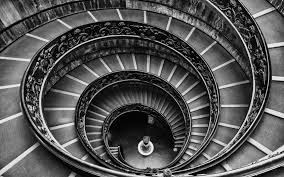 I wonder how many elderly or disabled people who fall require assistance to get off the ground or floor. Over two hours of smelling the carpet is not the best fragrance. The NSW Ambulance service averages about 25 minutes for an inner suburban urgent call. But not mine; the ambulance was based in Paddington (7.8 kilometres or 14 minutes) from my home.
I wonder how many elderly or disabled people who fall require assistance to get off the ground or floor. Over two hours of smelling the carpet is not the best fragrance. The NSW Ambulance service averages about 25 minutes for an inner suburban urgent call. But not mine; the ambulance was based in Paddington (7.8 kilometres or 14 minutes) from my home.
I know of a private outfit which provides a pendant to be worn with an alarm system that can be activated in the event of an emergency. The reviews have not been good; and anyway, given the prevalence of falls in the elderly, why should the government not be responsible for such a service linked to the other emergency services. Like so much of aged care, government has sloughed it off to the private sector.
Ten days later, I am still bruised; my head is clear, yet my proprioception is worse, but I am improving.
Nevertheless, I have had to reflect on the ambulance response. Maybe I shall write a letter.
Was the Hunchback Saved?
Notre-Dame Cathedral was never a favourite of mine, a gloomy edifice stuck in the middle of Paris. This article by a celebrated art historian, Elizabeth Lev, is beautifully written, and in her own words a lovely example of how to extract everything from a nuanced approach. However, unlike Old St Paul’s which was demolished after it was badly damaged by the Great Fire of 1666 and replaced by the Christopher Wren ‘s masterpiece, compared with the Basilica in the Vatican, this Cathedral is being restored to modern gothic glory.
What is it about a church renovation that convinces everyone that society is fast-bound for hell in a handbasket?
I’ve been asking myself this question in recent days because of the hubbub surrounding the proposed rebuilding of Paris’s Notre Dame Cathedral. On Thursday, plans for the renovation of its interior spaces will be presented to the commission nationale du patrimoine et de l’architecture for approval. In advance of the review, press coverage has sought to whip decisions over Notre Dame’s “wreckovation” into an epic battle between the sacred and profane. But as with most controversies surrounding Notre Dame — and historical sanctuaries more broadly — the performative outrage obscures a more benign reality.
A recent article electrified the otherwise tranquil proceedings of clearing wreckage and stabilizing support structures in the 858-year-old church. Parisian architect Maurice Culot sounded the alarm that the plan for the interior decoration would be as if “Disney were entering Notre Dame.” Other critics accused the church of bowing before the altar of “political correctness.” Panic buttons lit up throughout the Anglosphere, recalling previous fears that the church’s roof would become a swimming pool or a car park.
But what is the hair-pulling about, really? People wept as they watched the cathedral burn, but did they know what was inside? Was it the loss of the stained glass, the statues, or the paintings that they mourned? Not until Jean-Marc Fournier, chaplain of the Paris fire brigade, rushed out with the relic of Christ’s crown of thorns was there general awareness of what treasures the cathedral contained.
Now critics dread the potential introduction of “modern art objects” in the two dozen-plus side chapels. But how many people remember that, pre-fire, they were an ill-kept hodgepodge generally passed over by tourists in search of an Instagram-worthy shot of the windows?
Fewer hot takes and more studied responses would serve the ancient church better. Most reactions are based on the plan for the new interior presented in May by the Rev. Gille Drouin, installed last year as a canon of the cathedral to oversee the renovation. The design calls for a “catechetical path,” in which the church’s new point of entry would be the central portal confronting the viewer with the full majesty of the space. The reconfiguration would also make better use of the side chapels, each adapted to recount salvation history from Genesis to Christ’s resurrection to the life of the church today.
Celebrated monuments that miraculously escaped the fire — the bronze crucifix given by Napoleon III, the marble Notre Dame de Paris, the 14th-century carved choir stalls, and the crown of thorns entombed in the apse — would all feature in a single coherent itinerary.
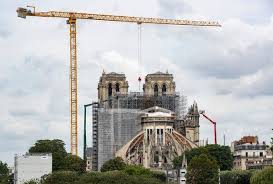 Cathedral restorers hope to collaborate with the Louvre for the restoration of “the Mays,” 76 large paintings of the Acts of the Apostles donated between 1630 and 1707 by Parisian goldsmiths. Today, some are randomly placed in the side chapels and others are in museums. The plan would return them to the nave, so that visitors would see the witness of the apostles lining the main axis of the church.
Cathedral restorers hope to collaborate with the Louvre for the restoration of “the Mays,” 76 large paintings of the Acts of the Apostles donated between 1630 and 1707 by Parisian goldsmiths. Today, some are randomly placed in the side chapels and others are in museums. The plan would return them to the nave, so that visitors would see the witness of the apostles lining the main axis of the church.
Drouin hopes to transform the cathedral, which welcomed 12 million people annually pre-pandemic, into a space that is truly “catholic,” or universal. The plan proposes five chapels for five continents, in which Bible verses would be projected in local languages. Perhaps this is what spawned the Disney comparison, a kind of Catholic Epcot Center.
But for an international icon in a city where 20 percent of residents are immigrants, what’s the problem with spreading a message of hope to every person who crosses that venerable threshold? And while some have dubbed it “Christianity for Dummies,” in a world where many Catholics are shaky on scripture and many young people are raised without religion, some back-to-basics catechetics might be in order.
While the new designs might not be to everyone’s taste, it is helpful to recall the true horrors that this cathedral has survived: French revolutionaries who beheaded its facade statues and repurposed the high altar to host a scantily clad “goddess of reason,” Napoleon’s gutting of the interior for his self-coronation as emperor, the collective neglect that spurred Victor Hugo to write “The Hunchback of Notre Dame” as a cri du coeur to preserve the building.
It is also worth remembering that St. Peter’s Basilica was knocked down and rebuilt by Pope Julius II in 1506 to similar outcry, and the Archbasilica of St. John Lateran, one of the oldest Catholic churches in the world, has been rebuilt half a dozen times, each reconstruction adding a piece of “contemporary” art. In these cases, novelty in the name of catechesis has proved its worth. Indeed, the opportunity to commission new art could even revitalize long-stagnant Catholic patronage.
Regardless of attempts to turn Notre Dame’s renovators into cartoon villains, the reality is more nuanced. But nuance, unfortunately, attracts little limelight. Thus topics as seemingly tame as repairing a church after a fire become cultural flash points: Whether praising or panning, everyone gets a thrill.
Mouse Whisper
Did you know I have an Irish cousin? The Olive-backed Pocket Mouse (Wyoming Pocket Mouse a.k.a Caic Tarbh Mouse) has a silky fur olive-grey colour, with a top band of black and olive. A yellowish-buff line marks its sides and the patches of fur behind its ears are light yellow. It is buff to pure white below, but it has a tail in the shape of a shamrock with a curious phosphorescence useful for directions to the nearest mouse hostelry. The biological name for such a tail is lanteen trefoilias.

